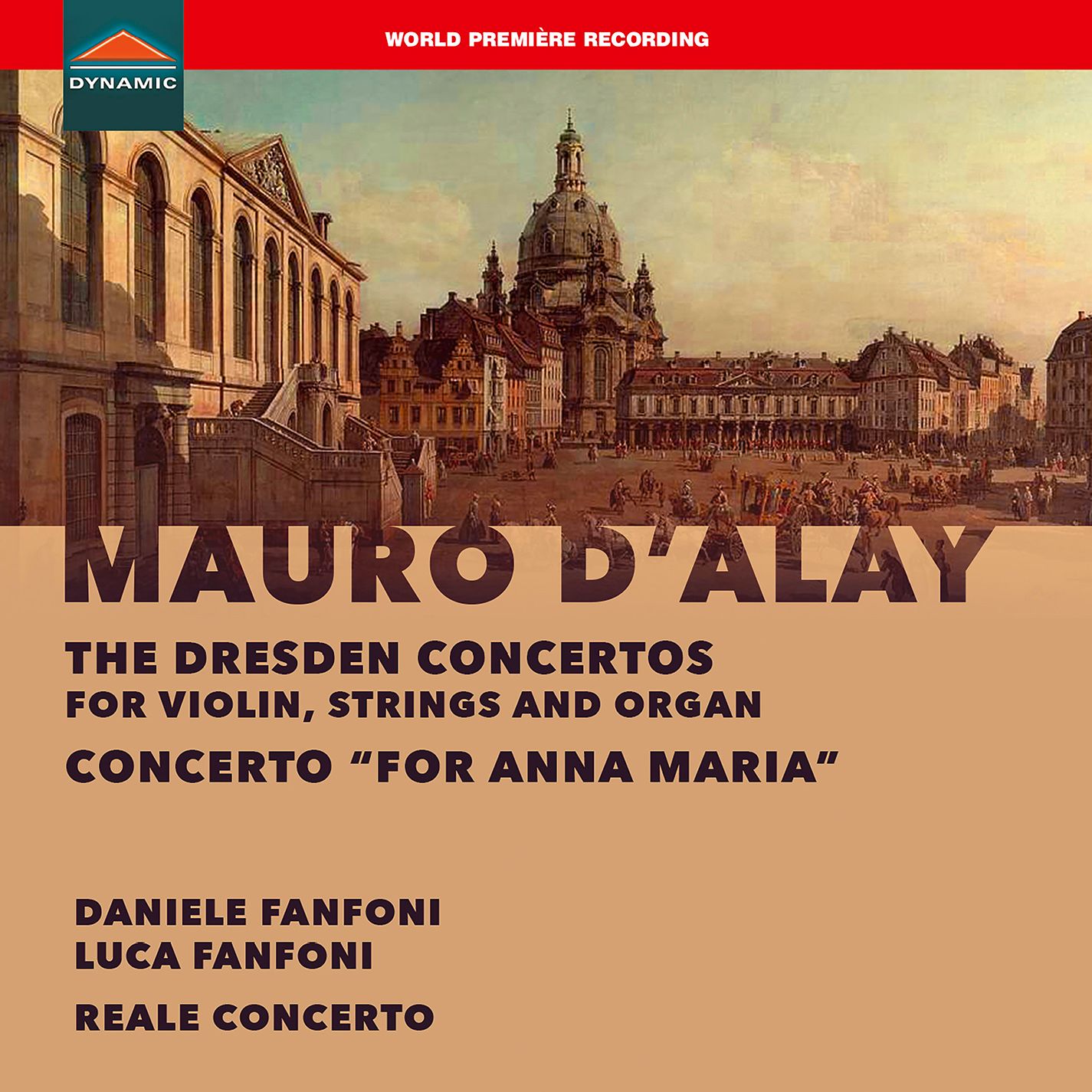D'Alay: The Dresden Concertos
This disc is a triumph on so many levels. Try D’Alay’s music - you won’t regret it

A native of Parma, Mauro D’Alay (1687-1757) was a violinist and composer of some fame. He spent many years in the employ of King Philip V of Spain, and (for the period here cosidered) has been described as “the solo concerto composer in Parma” by Simon MvVegh and Jehoash Hirshberg in their book The Italian Solo Concerto 1700-1760. We know D'Alay frequented Venice and there came in contact with Vivaldi and the Ospedale della Pietà orchestra, and we also know that two of the present concertos were in the orchsetra’s repertoire, including the final concerto on this disc, the D-Major, “For Anna Maria”. The court of Parma itself was known to Domenico Scarlatti and the held the native compsoer Francesco Corselli, abdteh castrato Carlo Boschi (aka Faranelli) and it was to that court D'Alay retured after the death of Philip V in 1746.
The present recordings include world premieres from manuscripts mostly (five of the six concertos) found in the Dresden Sächsische Landesbibliothek, hence the epithet “Dresden Concertos”. This seemed particularly relevant given my recent trip to Dresden for a period performance-informed Wagner Rheingold! (report to appear in Opera Now). The concertos are heard in transcriptions and elaborations by Massimiliano Fanfoni (who is also cellist wih Reale Concerto, playing a Girolamo Amato instrument from around 1600); the two soloists are Daniele Fanfoni, who plays on a 1690 Goffredo Cappa, and Luca Fanfoni. who plays on a Lorenzu Storioni of 1778.
Although there are parallels with Vivaldi in D'Alay's use of form, D’Alay is freer, even veering towards the galant in the intriguing Concerto in D minor, and in pieces dedicated to the famous Venetian violinist, ‘Maestra’ Anna Maria della Pietà.
You might find something of Vivaldi in the first movement of this D-Minor Concerto though for two violins, performed with great spirit here by Daniele and Luca Fanfoni:
The use of orchestral octaves in the central Largo is most effective against the solos’ musings, as is the rhythmic shifts and play in the Allegro finale:
It is Daniele Fanfoni who is the soloist in the D-Major, a concerto that immediately breathes a different air, somewhat more galant in style. Here’s the first movement:
The Grave second movement is almost a condensed aria for violin and basso continuo - we are very aware of the registral distance between soloist and the cello bass:
.. .while the finale is properly virtuoso. Daniele Fanfoni, the soloist in this concerp, is superb, whether in the difficult stoppings or in the music passage for violin and cellos (again, that registral separation at work). And just listen to D’Alay’s flights of imagination in the cadenza:
The B flat Concerto is notable for its slow movement, an Adagio of tissue-like delicacy. Listen to the transparency the ensemble Reale Concerto bring to the opening before Daniele Fanfoni sings his long cantabile line. A small but crucial point - listen to how Fanfoni and the Reale players are so careful in their approach to cadences:
The finale here is just wild: frenetic (but not frantic) and full of contrasts:
The disc juxtaposes two Concertos in B flat, the second one “For Anna Maria,” is from the Ospedale collection. As “Anna Maria della Pietà” only kept the olo parts to her concertos, this one is heard in reconstruction by Emilio Ghezzi, in D’Alay’s style. Here, let’s hear the bright and breezy finale - for all of its bright mood, it is features remarkably sophisticated writing:
Also attributed to Carlo Zuccari, the F-Major Concerto is chocfull fo exuberance, brilliantly conveyed both by the soloit[s pyrotechnics - here Luca Fanfoni - and by the sheer rhythmic exactitude of the tutti ensemble. Luca Fanfoni’s high register is notably sweet, too, and ust listen to the harmonic blossoming of the final cadance from the Reale players:
The slow Siciliano (with its characteristic dotted, rocking rhhthm) of this concerto seems particularly profound, the Presto finale particularly frizzy with energy. Here”s the central movement:
Finally, the Concerto in D “For Anna Maria,” with orchestral parts by Emilio Ghezzi. The compeltion is seamless, and one can hear D’Alay's characteristic violin flights against deep bass again. Occasionally the inner parts feel padded out. The excellent soloist here is Luca Fanfoni:
The central Andante seems particularly darkly shaded; Luca Fanfoni’s way with trills ensures they are never decorative, but hold real expressive purpose:
Positively Vivaldian leaps open the Allegro finale! It is the harmonic twist that ffollows them that re-places us back in D’Alay’s world:
This disc is a triumph on so many levels: musicologically, technically (both in terms of perforance standard and actual recording), and most of all, musically. Try Mauro D’Alay’s music - you won’t regret it.
